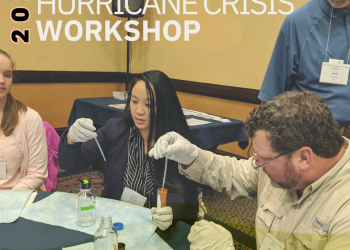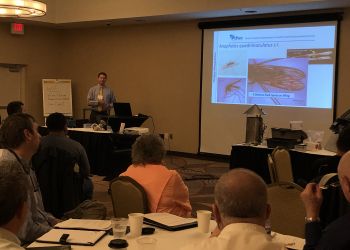Recently, the Centers for Disease Control and Prevention’s (CDC’s) Agency for Toxic Substances and Disease Registry (ATSDR) released a final report summarizing the findings of per- and polyfluoroalkyl substances (PFAS) exposure assessments (EAs) from ten sites.
Site locations include:
- Westhampton Beach and Quogue Area, New York (NY pilot EA)
- Montgomery and Bucks Counties, Pennsylvania (PA pilot EA)
- Hampden County, Massachusetts (Westfield EA)
- Berkeley County, West Virginia (Berkeley County EA)
- New Castle County, Delaware (New Castle County EA)
- Spokane County, Washington (Airway Heights EA)
- Lubbock County, Texas (Lubbock County EA)
- Fairbanks North Star Borough, Alaska (Moose Creek EA)
- El Paso County, Colorado (Security-Widefield EA)
- Orange County, New York (Orange County EA)
The report summarizes levels of PFAS in blood and urine from residents living in locations known to have had elevated levels of PFAS in their drinking water near current or former military bases and compares results to national PFAS levels. PFAS blood levels are shown by age, race/ethnicity, sex, number of years living in the community, drinking water consumption patterns, and other exposure parameters. The report also presents results from household dust and tap water samples and explores relationships between blood results and the environmental sampling data.
Key findings include:
- Average age-adjusted PFHxS blood levels are higher than national levels in all EA communities.
- Average age-adjusted PFOS and PFOA blood levels are higher than national levels in most EA communities.
- Elevated blood levels may result from past drinking water contamination in those communities.
- Some demographic and lifestyle characteristics are linked with higher PFAS blood levels.
- All tap water samples collected during the ATSDR-led EAs were below EPA’s 2016 health advisory and state public health guidelines for PFAS in drinking water. Two tap water samples had concentrations of PFOS above ATSDR’s environmental media evaluation guide (EMEG) for PFOS in drinking water.
- Patterns and levels of PFAS in dust measured in households participating in the ATSDR-led EAs are comparable to those reported in selected other U.S. studies
The summary report can be accessed at: PFAS-EA-Final-Report-Community-Summary-H.pdf (cdc.gov)
The full final report can be accessed at: https://www.atsdr.cdc.gov/pfas/activities/assessments/final-report.html.





